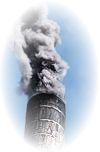Identifying Air Pollution Sources of Greatest Risk
Additional Information
Summary
HEASD is developing and applying source apportionment and exposure assessment tools to identify the air pollution sources contributing to the most significant human health risks. A critical component of this research is to develop an understanding of how air pollutants from various sources impact ambient air and, in turn, how these concentrations relate to the air people actually breathe. This information provides a fundamental linkage for evaluating public health impacts and developing effective strategies to reduce air pollution and the resulting impacts on human exposures and health effects.
Research Areas
Reducing Uncertainty in Source Apportionment - Studies of air pollution are used to determine the impact of sources affecting ambient air and the air people breathe. In order to accurately identify the sources of greatest risk to human health, improvements are needed in the methods to measure air pollutants and the computer models used to evaluate these pollutants. The research conducted in this area involves developing and improving methods and models that will provide improved information to reduce the uncertainty associated with identifying the sources of greatest risks to human health. Details of Reducing Uncertainty in Source ApportionmentEnhancing Exposure Estimates - Computer models are used to estimate the air pollutants people breathe. This research involves developing, improving and evaluating the models. Models that estimate human exposure to air pollutants will be linked with air quality dispersion models to provide improved estimates of air pollution exposure at the neighborhood level. These improvements in models will provide a better understanding of the air pollution people breathe for use in studies that evaluate the effects of air pollution on human health. Details of Enhancing Exposure Estimates
Linking Sources to Exposure - The methods and models developed and evaluated in concurrent HEASD research are used to understand the impact of sources on the air people breathe. Studies are conducted to collect real-world data to characterize air pollutant concentrations and exposures. Measurement studies are conducted to evaluate the impact of the various sources present in an airshed and to improve our understanding of the impact of a specific source (motor vehicles) on the air people breathe. Details of Linking Sources to Exposure
Linking Exposure to Health - Collaborative studies are conducted of exposure to air pollutants and the resulting health effects to better understand the linkages between sources of air pollution, their impact on exposures and resulting health effects. This research provides a better understanding of the relationship between air pollutants, their sources and impacts on human health. Details of Linking Exposure to Health
![[logo] US EPA](https://webarchive.library.unt.edu/eot2008/20090510232241im_/http://www.epa.gov/epafiles/images/logo_epaseal.gif)